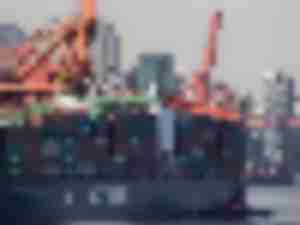Traffic Club of New York extends far beyond Gotham
As Norfolk Southern Corp. marketing executive Carroll E. Neville looks forward to the 113th anniversary dinner of The Traffic Club of New York, set for Feb. 28, he still finds himself having to explain how come a man whose office is in South Carolina is president of a New York-based professional organization.
Vanterm terminal reopening
An Evergreen ship, the Ever Summit, that struck a gantry crane at the GCT Vanterm container facility in the Port of Vancouver on January 28 has been freed through recovery operations and is expected to depart on Thursday morning, announced GCT spokesperson Louanne Wong.
Delayed progress of recovery operations at Vanterm
Recovery work is continuing at the GCT Vanterm container facility in the Port of Vancouver where all cargo-handling has ceased since the collapse last Monday of a gantry crane struck by an Evergreen ship, the Ever Summit.
Transportation Industry Wraps Up Solid Year, Despite Tariffs
With tariffs, a U.S.-China trade dispute and technology developments, the U.S. transportation industry was anything but lackluster in 2018. Although the industry in general fared well despite major disruptors, uncertainty surrounding tariffs raise concerns for the future.
The CPTPP’s Ratification Clears way for Enforcement, but it is also Causing Nervousness Among U.S. Shippers
Wendy Cutler, the Vice President of the Asia Society Policy Institute and a former acting deputy U.S. Trade Representative, who had also negotiated the then U.S. led 12-member Trans-Pacific Partnership (TPP), could hardly conceal her disappointment when asked by this correspondent at a recent discussion at the Asia Society in New York to share her thoughts on the U.S. withdrawal from the TPP. She called it a “mistake”.
Recovery operations progress after crane collapse at Vancouver container terminal
There appears to have been some shipping delays but no major cargo diversions as a result of the collapse of a gantry crane struck by Evergreen’s 7,000-TEU Ever Summit vessel berthing last Monday at one of the four container terminals at the Port of Vancouver.
COSCO’s Finkel says rates still too low as AAPA opens Tampa trade conference
Longtime ocean carrier executive Howard S. Finkelsays rates are still too low as the American Association of Port Authorities’ 12th annual Planning for Shifting Trade Conference gets under way today [Jan. 30] in Tampa, Florida.
Starting a successful transportation business
Businesses that manufacture and sell goods need a way to get them from one customer to the next.
How to avoid Demurrage & Detention with Container xChange
Demurrage and Detention quickly become a shipper’s nightmare and can result in thousands of dollars in per diem charges. Costs that arise because of bad planning, unforeseen circumstances and bad communication and play such a big role in the final cost of freight.
SMC3’s Jump Start 2019 leaps into gear as legislator calls for infrastructure fix
U.S. transportation infrastructure is in dire need of fixing and will require funding from multiple sources, a member of Congress said today [Jan. 28] as Jump Start 2019, presented by SMC3, leaps into gear in suburban Atlanta.
© Copyright 1999–2025 American Journal of Transportation. All Rights Reserved









_-_127500_-_dbd6485659689f6eca7dcdd309d41a5f05a521f4_lqip.jpg)

